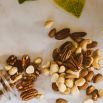While past decades may have outwardly seemed like a tug-of-war between traditional and modern medicine, the complement of each to the other proves more apparent.
Dr. Tu Youyou's Nobel Prize winning discovery is such a one, the anti-malarial artemisinin drug. Derived from wormwood, this was discovered after a thorough study of more than 2,000 recipes of herbal cures. This drug has since been helping millions of lives.
Five remedies of old are similarly still around and doing wonders to wellness. Although natural, they still require a methodical understanding in use and limitations. The danger in insufficient knowledge of use in their raw form and the necessity of sustainability must always be factored in.
Milkweed
The Complete Herbalist (1826) by Nicolas Culpepper recommends the sap of this common weed for the treatment of warts. Although effective, unsupervised use may lead to irritation.
Biochemist Dr Jim Aylward discovered in 1997 that milkweed has an active ingredient called ingenol mebutate that is toxic to rapidly replicating human tissue. Dr. Aylward's mother used the sap to treat sunspots.
The Picato gel, derived from this sap, has had recent tests that suggest its ability to stop lesions from progressing into skin cancer.
Leeches
Draining excesses from the body, popularly blood, was one of the best ways to restore the balance among blood, black bile, yellow bile, and phlegm. Hippocrates regarded this as the essential balance of the four bodily humours.
Leeches have made a comeback and are making the rounds in hospitals such as the UCLH in London to help in the natural healing process. They are used to drain excess blood from microsurgeries, and for care after skin grafts or after body parts as ears or fingers are reattached.
Today, a farm in Wales supplies the main bulk of medicinal leeches globally.
Willow
The bark of a willow tree was used in the ancient times to relieve pain. While a study of its properties was successfully conducted by the Royal Society as early as 1763, it only found its way to the pharmacies when drug company Bayer began its production as aspirin.
In current times it is thought to help in reducing the risk of stroke as well as in the prevention of cancer.
Snowdrops
Snowdrops produce the active ingredient Galantamine, which is used in the treatment of Alzheimer. People in the past used to rub the forehead with the flowers of this plant to treat headache.
Cow's Stomach Juice
Bald's Leechbook, a 1,000-year-old Anglo-Saxon medical textbook recommends an eye treatment made of onion, garlic, wine and cow's bile crushed together and allowed to set in a container for nine days and nights.
Studies show that this ancient remedy works against MRSA faster than even the best antibiotic.
Dr Christina Lee, who is an associate professor for Viking studies at the Nottingham University and who translated the eye salve recipe, says, "Anglo-Saxon remedies don't have the best reputation, but the idea that Anglo-Saxon medicine is superstition has clouded our judgment."
See Also:
- Ancient Remedies in the Bible Still Used Today: What are the Stinking Rose and Prunus Dulcis?
- Natural Oils Best for Skin Health, Teeth Whitening with Oil Pulling
© copyright 2024 Food World News, a property of HNGN Inc. All rights reserved. Use of this website constitutes acceptance of our terms and conditions of use and privacy policy.









